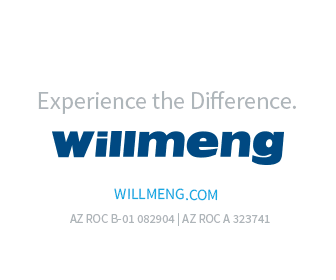Compare and Contrast: 1031 Exchanges and Opportunity Zones

Both options can be good investment vehicles for commercial real estate.
Until recently, taxpayers who wanted to defer recognition of capital gains when selling real estate had one option — the 1031 exchange. However, the Tax Cuts and Jobs Act of 2017 (TCJA) introduced the Qualified Opportunity Zone, a new option that has many investors and developers intrigued. Both of these vehicles defer capital gains tax, increase buying power and encourage reinvestment, but as the saying goes, the devil is in the details.The thoughtful investor will learn all the nuances before determining which strategy might be most suitable.
The 1031
Consider a taxpayer who owns a property that has greatly appreciated in value. The taxpayer would like to sell, but fears the sizeable associated capital gains tax. For almost 100 years, the 1031 exchange has been a viable solution: the taxpayer may sell the property in question — the relinquished property — and fully reinvest the proceeds into a replacement property, in the process deferring capital gains tax on the sale. While a suitable replacement property is being located, a qualified intermediary holds on to the proceeds from the relinquished property.
1031 exchanges are essentially “swaps” of “like-kind” real property. Under the new rules instituted in the TCJA, real estate sales are the only permissible starting point, and both the principal and the capital gains portions of the sale must be reinvested in the replacement property in order to defer the entire gain. The properties must be held for investment purposes or be a trade/business — an exchange can’t involve land being developed or properties purchased for resale, for example. There is no geographic restriction on 1031 property, and the exchange may even take place between related parties. Furthermore, the investor is under no obligation to improve the replacement property in any way.
Qualified Opportunity Zone Investments
Enacted by the TCJA, Qualified Opportunity Zones (QOZs) are 8,700-plus federally designated Census tracts in low-income communities nationwide. Interested investors may defer capital gains tax by reinvesting capital gains into a Qualified Opportunity Fund (QOF), which is used to acquire property and/or businesses located in an approved QOZ.
The gains to be reinvested may stem from the sale of real estate (similar to a 1031), or from the sale of other appreciated assets (stocks, bonds, etc.). However, a sale to a related party is not a permissible source of gain. In another contrast, only capital gains from the sale have to be reinvested into the QOF. A taxpayer certainly may invest the principal or other monies, but only the capital gains portion will be eligible for the tax advantages. Investments in QOFs must be in cash, and there is no “middleman” required.
In one sense, QOFs have a little more flexibility than 1031 exchanges — as noted earlier, the QOF can invest not only in real estate but also in operating businesses with personal property, in company stock, in capital resources like factory equipment, etc. In this sense, QOZ investments may have more potential for diversification, and they may become useful resources for start-up operations in need of capital. QOZ investments are also attractive to the passive investor. Since these pooled funds are diversified and professionally managed, the individual investor doesn’t have to be concerned with property selection, restrictive timelines, etc.
On the other hand, contributing to a pooled fund of this nature means that underlying assets are illiquid — extracting oneself from a QOZ investment may be more challenging than simply cashing out of a straightforward 1031 exchange.
QOZs have two major limitations — the QOZs are finite in number and geographically limited. Rapidly gentrifying areas are going fast — with potential for overinvestment — while rural QOZs may lack investors and languish. Additionally, substantial improvement of the investment in the QOZ is required if the original use of the property didn’t commence with the QOF. This generally limits investments to new construction/redevelopment projects, another restriction on the potential investor.
Timing is Everything
Both incentives run on tight timeframes, and 180 days is the magic number.
In the case of a 1031 exchange, the clock starts ticking at the time the relinquished property is sold. The taxpayer has 45 days to identify a replacement property and 180 days to close on it. Note that the 45-day identification period is a subset of the total 180 days. In short, all proceeds from the original sale of the relinquished property must be reinvested within 180 days. Similarly, a taxpayer must reinvest his funds in a QOF within 180 days of the sale of the original assets.
What if there is a differential amount in the equity or debt of the relinquished assets and the replacement assets? If excess funds remain after a 1031 exchange, there will be a taxable gain. This isn’t an issue with a QOZ investment, as the investor is not required to reinvest all the proceeds of the assets sold. The taxpayer can tailor the exact amount reinvested to equal the exact amount of capital gains realized in the past 180 days, thus preventing any inequity and subsequent taxable gains.
Capital Gains Tax Deferral
A key attribute of the 1031 exchange is that it isn’t time-bound. Investors may (and very frequently do) roll funds from the sale of one replacement property right into the purchase of another replacement property, and so on. This cycle of exchanges (and associated tax deferrals) can happen indefinitely — and in fact is ideal. Many investors consider this when planning for the future.
If an investor passes away before the investment is sold, the heirs inherit the property with a step-up in basis equal to the fair market value of the property at that time. The heirs may pay no capital gains tax whatsoever. The value of this strategy has begotten the morbid but wise expression “defer, defer, die,” and it has made the 1031 exchange attractive to the thoughtful, long-term investor for some time.
QOZ investments, however, have a hard deadline. Capital gains tax can be deferred until the investment is sold, or at the latest, December 31, 2026. Rollovers are not an option.
Capital Gains Tax Reduction
1031 exchanges defer capital gains tax, but can’t reduce them. This is where QOZ investments really excel. If a QOZ investment is held for five years, the taxpayer will enjoy a 10% reduction in capital gains tax liability. If the investment is held for seven years, the tax burden on the original gain invested will be reduced by another 5%, for a total of a 15% capital gains tax reduction. However, that aforementioned deadline of December 31, 2026 means the clock is ticking. If a taxpayer wishes to meet the seven-year mark, the QOZ investment must be made by the end of 2019.
When it comes to capital gains tax reduction, the advantage appears to lie with QOZ investments, but many clients won’t hold the investment long enough to enjoy the full benefits.
Capital Gains Tax Upon Sale
It’s finally time to dispose of the selected investment. If the investor is still living at the time the final property is liquidated, all capital gains associated with a 1031 exchange will be taxed. However, the aforementioned “defer, defer, die” principle eliminates capital gains tax for the heirs of a taxpayer who dies before liquidating the investment.
QOZ investments cannot boast the same. Heirs are fully responsible for capital gains taxes accrued, which will be due in 2026. However, if the QOZ investment is held for a full 10 years, the basis of the QOZ is stepped up to full market value at the time of the sale, entirely eliminating capital gain on any appreciation. This is a permanent tax exemption, and the taxpayer is not required to pay any federal capital gains tax when the QOZ investment is eventually sold.
When in Doubt, Seek Assistance
Both incentives have their merits and limitations, and both may be powerful investment tools when used properly. In fact, wise investors might find utility in both opportunities at different points in their career. Thoughtful investors will consult with both legal and tax professionals to select the best incentive for their current situation. They may even couple the selection with other tax strategies like cost segregation to further enhance cash flow.
One thing is certain in the world of commercial real estate today: great opportunities exist, but with them come greater complexities.
Bruce A. Johnson, CRE, is a co-founder and partner at Capstan Tax Strategies.







